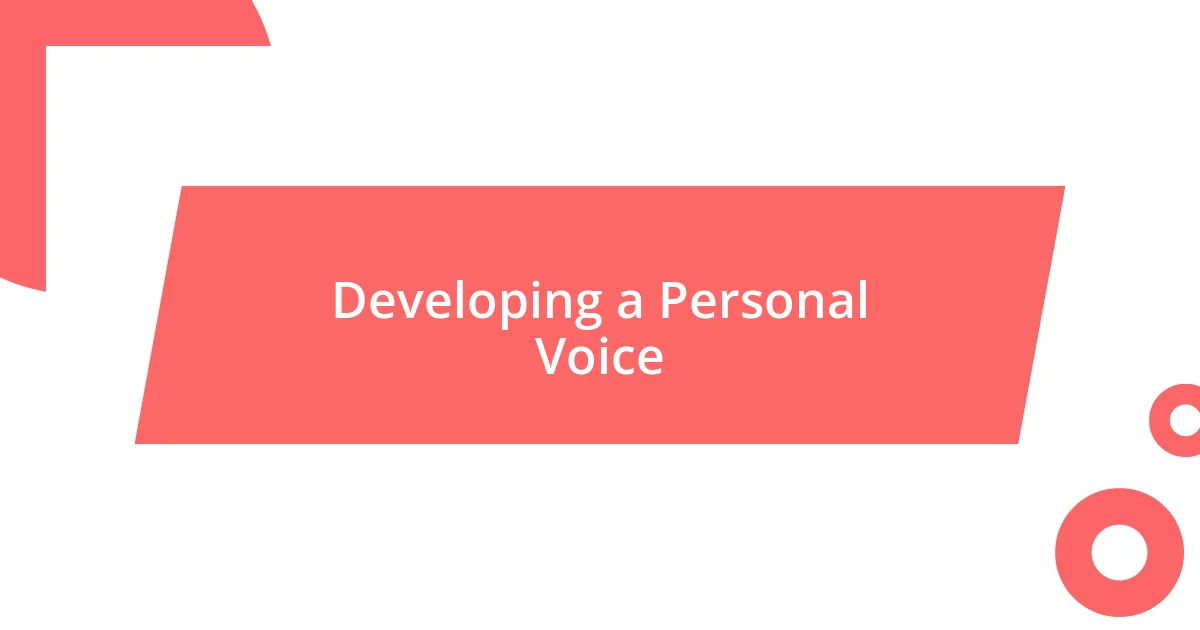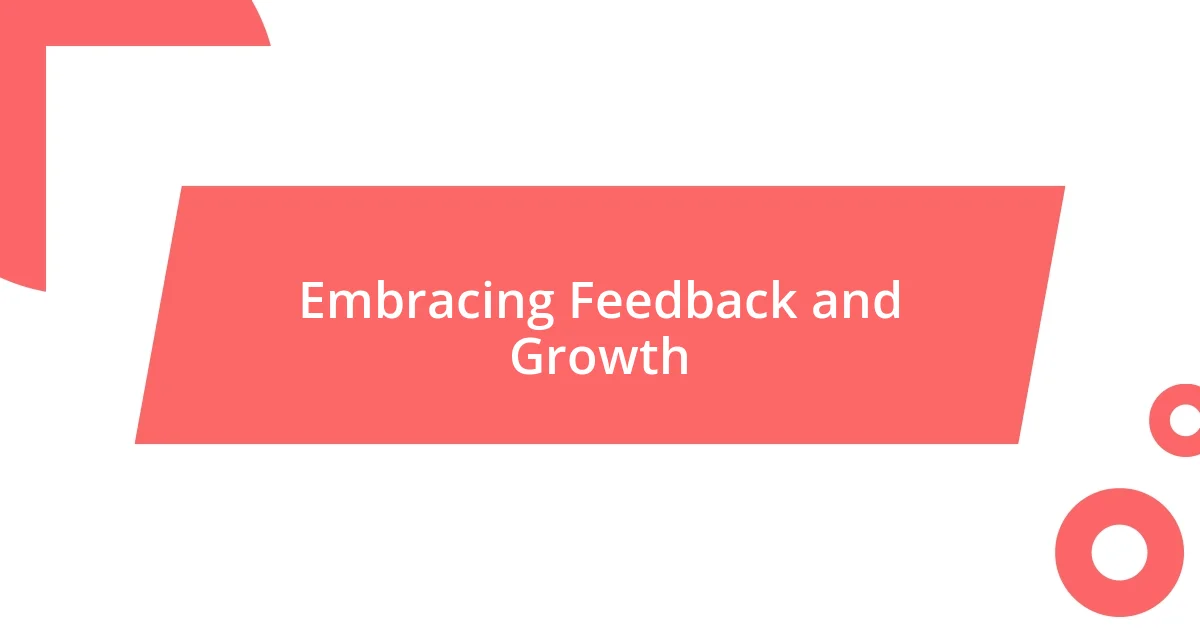Key takeaways:
- Directorial style is a personal journey, influenced by experiences, emotions, and experimentation, evolving with each project.
- Identifying influences from filmmakers like Kurosawa and Lynne Ramsay helped shape the author’s approach by emphasizing emotional depth and visual storytelling techniques.
- Embracing feedback and collaboration transformed the author’s work, enhancing authenticity and creating deeper connections in storytelling.

Understanding Directorial Styles
Understanding directorial styles is a deeply personal journey, shaped by experiences, influences, and individual creativity. For instance, I remember my first time on set, feeling a mix of excitement and trepidation. Watching my favorite directors’ choices unfold before me made me wonder, “What do I want my films to convey?”
Each director has a unique approach, often dictated by their understanding of storytelling and visual expression. I recall a mentor sharing that directorial style isn’t just about technique—it’s about emotion. That resonated with me. As I explored various styles, I found myself gravitating towards those that prioritized authentic moments over mere spectacle; it became a revelation.
In reflecting on my journey, I’ve discovered that style isn’t static; it evolves with every project, drawing from childhood influences, personal struggles, and the ever-changing landscape of film. This fluidity prompts me to ask: “How do my own experiences shape what I want to express?” Each answer propels me forward, crafting a directorial style that feels both uniquely mine and constantly evolving.

Identifying My Influences
Identifying my influences has been a fascinating journey, often leading me down unexpected paths. I vividly remember watching a classic film by Kurosawa that left me pondering the power of silence in storytelling. In that moment, I realized how much I valued restraint and the ability to communicate deep emotions without dialogue. This experience shaped my directorial choices and pushed me to explore how less can indeed be more.
As I dove deeper into cinematic history, the work of contemporary filmmakers began to resonate with me just as intensely. For instance, during a late-night viewing of a Lynne Ramsay film, I was struck by her use of rhythmic pacing and striking visuals. It became clear that my influence wasn’t limited to just the films I cherished as a child; rather, it spanned generations and styles, each adding layers to my evolving vision as a director.
In exploring these influences, I often ask myself: “How do the stories and styles of others inspire my own?” It’s a blend of admiration and introspection, where I analyze not just what I like in film, but why it moves me. This process has forged a path where my personal experiences—joys, struggles, and observations—intertwine with those of the directors I admire, ultimately forming the bedrock of my unique directorial voice.
| Influence | Impact on My Style |
|---|---|
| Kurosawa | Emphasis on silence and emotional depth |
| Lynne Ramsay | Incorporation of rhythmic pacing and striking imagery |

Experimenting with Different Approaches
Experimenting with different approaches is a crucial part of crafting my directorial style. I remember feeling a wave of exhilaration when I first decided to step outside my comfort zone. On one project, I tried a documentary-style shooting technique, which forced me to relinquish control over every moment. This was a revelation; capturing raw, unscripted emotions added an authenticity I hadn’t expected. It made me realize that sometimes the magic lies in the unexpected.
Here are a few different approaches I experimented with:
- Improvisation: Allowing actors to create their own dialogue led to genuine interactions and surprising moments.
- Non-linear storytelling: Telling a story out of order challenged both me and the audience, prompting deeper engagement.
- Minimalist sets: Stripping the visual distractions taught me how much the right performances can shine without extravagant backdrops.
- Incorporating music early: Using music during filming helped create a rhythmic pulse, influencing the performances in real time.
Each of these methods taught me not just about directing, but about connecting with my storytelling on a deeper level. I’ve learned that experimentation is often messy but incredibly rewarding, as it pushes the boundaries of what I thought was possible.

Seeking Inspiration from Other Directors
Drawing inspiration from other directors has become integral to my growth as a filmmaker. One evening, while watching a film by Alfonso Cuarón, I felt a jolt of inspiration as I noted his masterful long takes. The way he immerses viewers in a scene was electrifying. I found myself reflecting on how I could incorporate this technique into my own projects, showcasing the subtleties of human interaction in a single, fluid motion.
I often find myself tracing back to the works of Sofia Coppola, particularly her keen eye for atmosphere. There’s something about her ability to infuse even mundane moments with beauty that resonates with me. After watching Lost in Translation, I realized that I wanted to capture the nuances of isolation and connection in a similar way. Have you ever experienced that moment when a film just clicks with your inner thoughts? For me, it was a profound awakening that allowed me to rethink what my own storytelling could embody.
Whenever I explore the films of directors I admire, I make a habit of asking: “What choices did they make, and why did those choices evoke certain emotions in me?” This introspection has fueled my desire to experiment more aggressively. Not only do I gain insights into visual storytelling, but I also articulate my own passion for the themes that resonate within me. It’s this delicate dance between learning from others and nurturing my unique voice that guides me through the labyrinth of directing.

Developing a Personal Voice
Finding and developing a distinctive personal voice is like piecing together a puzzle, and it can often feel overwhelming. I recall a specific moment during a late-night brainstorming session when I scribbled down ideas for a project that felt true to me. It was liberating to discover that expressing my own experiences, fears, and joys could resonate on a deeper level with my audience. The realization dawned on me that my voice is woven from the threads of my unique journey. Have you ever considered what elements of your life could become the foundation of your creative expression?
As I navigated my early projects, I paid close attention to the themes that kept resurfacing. Personal experiences of loss and love naturally found their way into my narratives, revealing aspects of my voice that felt genuine. One particular script I wrote explored a childhood memory of my grandparents’ love story, and it struck a chord not only with me but also with the cast and crew. They connected with those emotional truths, and I knew then that harnessing personal stories was key to developing my voice. Doesn’t it feel powerful when you can touch others with your own truths?
The process of honing my voice hasn’t been a straight path; it has involved countless revisions and reflections. I often look back at earlier works and recognize how much I’ve evolved. Each film is a snapshot of my growth, illustrating how layers of my perspective have intertwined. It’s like a diary of my thoughts and feelings. Do you find yourself looking back at your own work in a similar way? Recognizing how far I’ve come inspires me to keep exploring and refining my voice, and I encourage you to embrace this journey too.

Embracing Feedback and Growth
Embracing feedback has been a game changer in my directorial journey. I remember a time during a crucial test screening when an audience member pointed out a scene that fell flat emotionally. At first, it stung, but I realized that feedback is a gift; it sheds light on aspects of my work that I might miss. Wouldn’t you agree that a fresh perspective can often unveil hidden depths?
As I started to actively seek out constructive criticism, I found that it opened up new creative avenues for me. One instance stands out: after sharing an early draft of a screenplay, a mentor encouraged me to dig deeper into the characters’ motivations. This pushed me to rewrite crucial scenes, resulting in richer storytelling that ultimately connected with viewers on a profound level. Have you had moments where feedback transformed your vision into something greater?
Understanding that growth comes from vulnerability has shaped not only my work but my approach to collaboration. I’ve learned to foster environments where my actors and crew feel safe to voice their ideas and critiques. During a particularly intense rehearsal, one actor suggested a different way to deliver a line, and that off-the-cuff change sparked an emotional breakthrough for the entire scene. It’s a powerful reminder that embracing feedback isn’t just about improving; it’s about creating layers of authenticity and connection. Isn’t that what we, as storytellers, strive for?

Finalizing My Unique Style
Finding my unique style as a director didn’t happen overnight; it was a journey of exploration and experimentation. I distinctly remember a weekend workshop that challenged us to recreate our favorite scenes from classic films. As I put my spin on the material, I realized my aesthetic preferences and thematic choices were shining through. It was exhilarating to see how my interpretation transformed the original piece. Have you ever tried reimagining something familiar and discovered new facets of your creativity?
As I connected the dots of my personal experiences with cinematic techniques, I began to curate specific elements that feel genuinely mine. For instance, I have a fascination with unconventional narratives that reflect real-life complexities. While working on a short film inspired by a friend’s struggle, I chose to layer multiple timelines and perspectives. This choice not only elevated the storytelling but also mirrored how life often unfolds in intricate layers. It made me wonder: what narrative techniques resonate most with your own life experiences?
Moving forward, I’ve made it a point to balance authenticity with innovation. Experimentation remains crucial in keeping my style fresh, yet I never want to stray too far from what is inherently me. I recall feeling a rush of excitement while trying new filming styles for a project, blending handheld shots with introspective monologues. The end result felt like a true reflection of my artistic voice. Isn’t it invigorating when you unearth something in your work that feels both innovative and authentically you?














